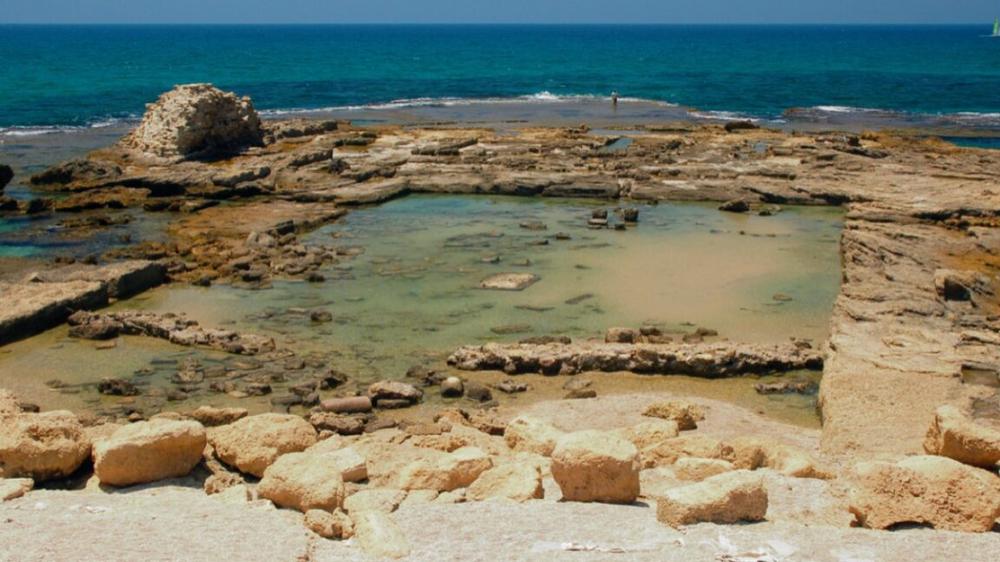Builders in ancient Rome used a special kind of ancient concrete to construct their aqueducts, bridges, and buildings. But is Roman concrete more sustainable than the Portland cement used in today's concrete? The answer is more nuanced than one might think, according to a new paper published in the journal iScience. Roman concrete produces as much CO2 as modern methods, but fewer air pollutants.
As we've reported previously, like today's Portland cement (a basic ingredient of modern concrete), ancient Roman concrete was basically a mix of a semi-liquid mortar and aggregate. Portland cement is typically made by heating limestone and clay (as well as sandstone, ash, chalk, and iron) in a kiln. The resulting clinker is then ground into a fine powder, with just a touch of added gypsum—the better to achieve a smooth, flat surface. But the aggregate used to make Roman concrete was made up of fist-sized pieces of stone or bricks.
Scientists have long been fascinated by the remarkable longevity of Roman concrete; it's a very active field of study. For instance, in 2017, scientists analyzed the concrete from the ruins of sea walls along Italy's Mediterranean coast, which have stood for two millennia despite the harsh marine environment. That analysis revealed that the recipe involved a combination of rare crystals and a porous mineral. So exposure to seawater generated chemical reactions inside the concrete, causing aluminum tobermorite crystals to form out of phillipsite, a common mineral found in volcanic ash. The crystals bound to the rocks, preventing the formation and propagation of cracks that would have otherwise weakened the structures.
In 2021, archaeologists analyzed samples of the ancient concrete used to build a 2,000-year-old mausoleum along the Appian Way in Rome, widely considered one of the best-preserved monuments on the famous road. They discovered that the tomb's mortar was similar to the walls of the Markets of Trajan: volcanic tephra from the Pozzolane Rosse pyroclastic flow, binding together large chunks of brick and lava aggregate. However, the tephra used in the tomb's mortar contained much more potassium-rich leucite. The potassium in the mortar dissolved in turn and effectively reconfigured the binding phase.
And in 2023, archaeologists analyzed samples taken from the concrete walls of the Privernum archaeological site near Rome and found that the Romans employed "hot mixing" with quicklime, among other strategies, to give the material self-healing functionality. When cracks begin to form in the concrete, they are more likely to move through the lime clasts. The clasts can then react with water, producing a solution saturated with calcium. That solution can either recrystallize as calcium carbonate to fill the cracks or react with the pozzolanic components to strengthen the composite material.
Testing ancient recipes
Yet the environmental impact of Roman concrete, compared to its modern counterpart, has not been rigorously assessed—until now. “Studying Roman concrete can teach us how to use materials in a way that can maximize the longevity of our structures, because sustainability goes hand-by-hand with durability,” said co-author Daniela Martinez, an engineer at Universidad del Norte in Colombia. “We were interested in how we can draw lessons from their methods to inform some of the climate-mitigation challenges that we currently face in our built environment.”
Martinez et al. tested three different Roman concrete recipes with varying slaked lime-to-pozzolan ratios (1:2, 1:3, and 1:4), and assessed greenhouse gas and air emissions for each production stage based on known Roman construction practices. Specifically, the Romans used oak and fir wood as fuel for their lime kilns. (Processes like loading, transportation, and mixing were done by human and animal labor and thus fell outside the scope of the analysis.) The team also assessed greenhouse gas and air emissions for modern concrete production, taking into account variability in equipment efficiency and energy sources for the kiln, among other factors.
The results surprised the scientists. Per volume of concrete, the production process for Roman concrete ended up emitting as much and in some cases more CO2 than modern formulations. On the other hand, Roman concrete emits much lower volumes of such air pollutants as nitrogen oxide and sulfur oxide—between 11 percent and 98 percent less, depending on whether the energy source was fossil fuels, biomass, or renewable energy (which had the biggest reductions).
Roman concrete is also more durable and hence would require less maintenance and replacement over time, which might further offset any negative environmental impacts. However, the authors caution that it's a difficult comparison, given that ancient Roman structures didn't use steel bars for reinforcement, unlike modern concrete construction methods. It's the corrosion of those steel reinforcements that primarily causes deterioration of modern concrete.
“Contrary to our initial expectations, adopting Roman formulations with current technology may not yield substantial reductions in emissions or energy demand,” said Martinez. “Using biomass and other alternative fuels to fire kilns may prove more effective in decarbonizing modern cement production than implementing Roman concrete formulations.” However, "there's a lot of lessons we can draw from the Romans. If we can incorporate their strategies with our modern innovative ideas, we can create a more sustainable built environment."
DOI: iScience, 2025. 10.1016/j.isci.2025.113052 (About DOIs).

 Marvel Reportedly Focusing on an X-Men Movie With Younger Talent to 'Keep the Cost Down,' as Well as Black Panther 3, but No Urgency on Blade or Deadpool 4
Marvel Reportedly Focusing on an X-Men Movie With Younger Talent to 'Keep the Cost Down,' as Well as Black Panther 3, but No Urgency on Blade or Deadpool 4